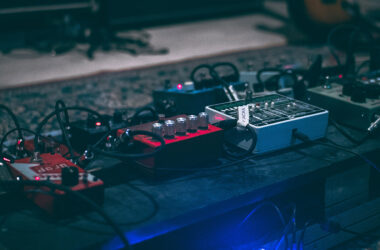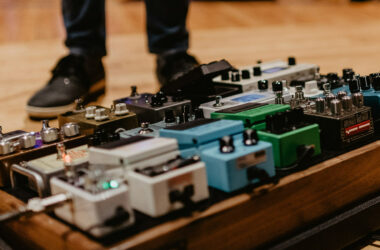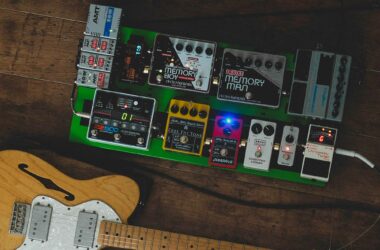Are you looking for an accurate and reliable tuner at your fingertips?
In this article, we present a selection of the 10 best tuning pedals, detailing their strengths, weaknesses and special features.
Different types of tuners
Before discovering our selection, let’s explore the different types of tuners available on the market, each offering specific characteristics:
- Chromatic tuners: detect all notes of the chromatic scale (the twelve semitones). Ideal for tuning several different instruments or using alternative tunings.
- Polyphonic tuners: allow you to check all the strings at once. Handy for quickly tuning an entire guitar.
- Stroboscopic tuners: Extremely precise, they display the note according to a light variation. Preferred by professionals and luthiers.
- Simple tuners: These models detect only standard guitar or bass notes. Simple and often economical.
The 10 best tuning pedals
Before we begin, and in order to evaluate these pedals in relation to each other, we have determined the criteria that will allow us to classify them:
- Accuracy: expressed in “cents”, this determines the tuning accuracy.
- Detection speed: important for rapid tuning on stage.
- Screen legibility: illumination and clarity in a variety of conditions.
- Sturdiness and size: durability and adaptability to the pedalboard.
- Additional functions: true bypass, muting options, polyphonic tuning, etc.
Walrus Audio Canvas Tuner
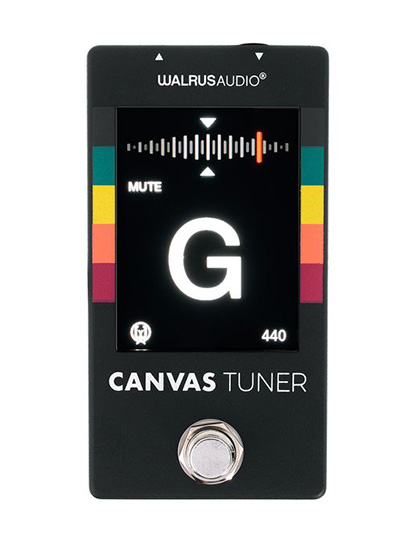
La Walrus Audio Canvas Tuner, which we announced would be launched in December 2023, is a novelty that combines elegant design and performance. With exceptional precision to ±0.1 cent and an ultra-readable LED display, it fits perfectly into any pedalboard. It also features true bypass, guaranteeing total signal transparency.
Weaknesses: fairly high price for a tuner.
Strengths: high precision, luminous display, sleek design and customization options.
Boss TU-3 tuner
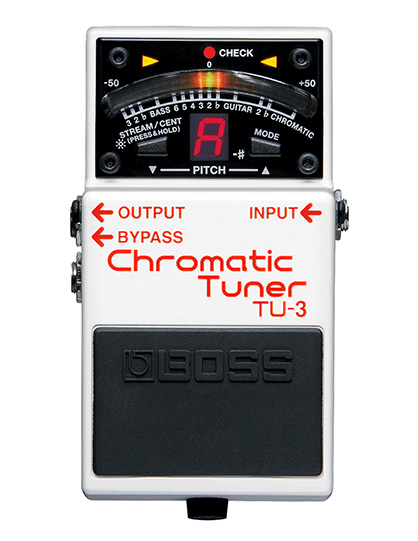
A must-have. Reliable, rugged and accurate to ±1 cent, the TU-3 features an easy-to-read LED display and a high-brightness mode for outdoor gigs. It also features chromatic and guitar/bass tuning modes.
Weaknesses: somewhat imposing size.
Strengths: solid construction, visible screen.
Boss TU-3W Waza Craft tuner
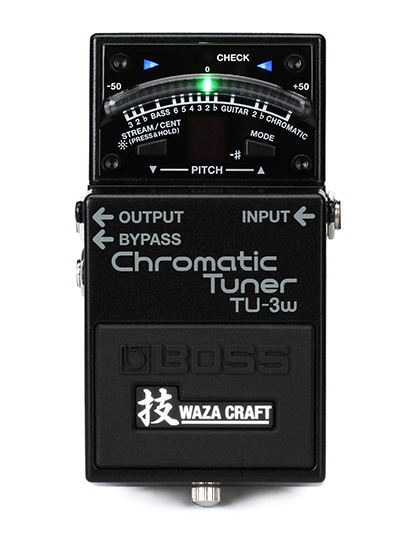
A high-end version of the TU-3, designed for sound purists. It offers enhanced sound quality thanks to a high-quality active buffer and optional true bypass, while retaining all the features of the original model. Ideal for demanding musicians who want precise tuning without compromising the audio signal.
Weaknesses: higher price than standard TU-3.
Highlights: high-quality buffer, true bypass, premium construction.
Tuner TC Electronic Polytune 3
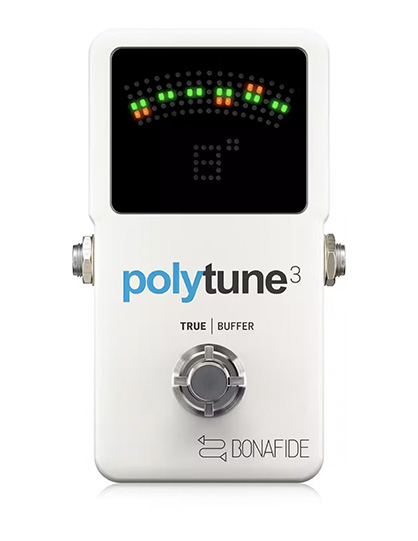
Featuring unique polyphonic tuning, the Polytune 3 lets you check all strings with a single stroke of the mediator. Its strobe mode offers ±0.2 cent accuracy.
Weaknesses: learning required for polyphonic mode.
Strengths: compact, precise, multi-functional.
Tuner Korg Pitchblack Advance
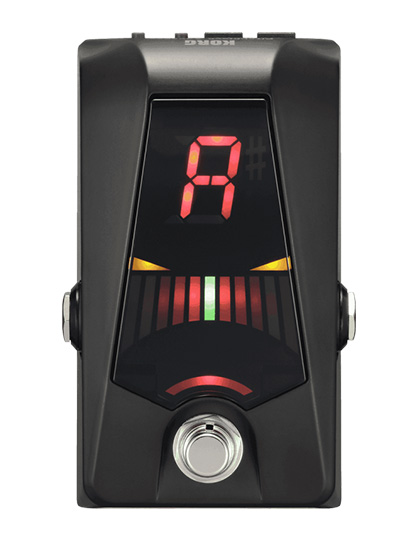
With its minimalist design and ±0.1 cent accuracy, the Pitchblack Advance is a sure bet. Its large screen and four display modes make it a versatile tool.
Weaknesses: no advanced features.
Strengths: exceptional legibility, good value for money.
Tuner D’Addario Chromatic Pedal Tuner+
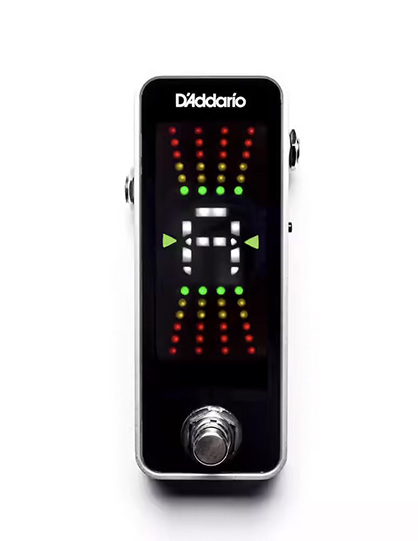
This model combines an accurate chromatic tuner with a power supply for your other pedals. Accurate to ±0.5 cent.
Weaknesses: screen less legible in bright light.
Highlights: power supply function, intelligent design.
Tuner Peterson StroboStomp HD
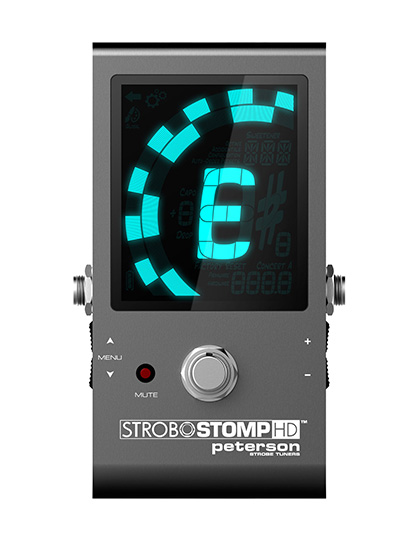
The reference in strobe tuning with ±0.1 cent accuracy. Ideal for demanding professionals.
Weaknesses: high price.
Strengths: incomparable precision, customizable screen.
Tuner Ernie Ball VP Tuner (EB6203)
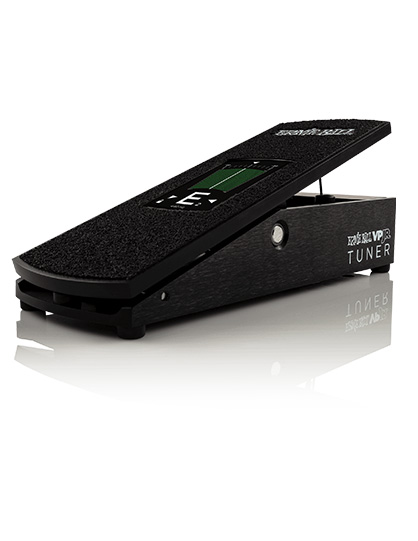
This pedal combines a chromatic tuner with a volume controller, saving space on the pedalboard.
Weaknesses: imposing size.
Strengths: dual functionality, robust construction.
Tuner Sonic Research Turbo Tuner ST-300
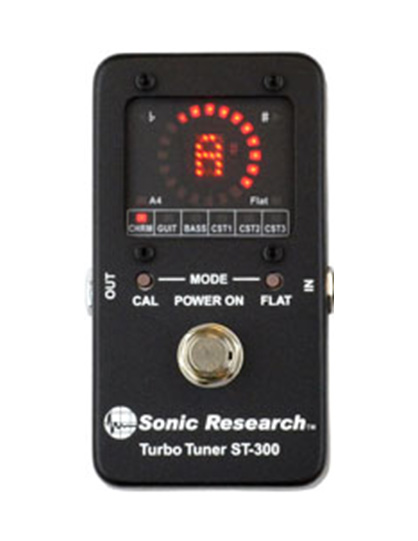
A much lesser-known pedal than the others, it nevertheless boasts stroboscopic precision and ultra-fast detection speed, making it an ideal choice for the most demanding musicians.
Weaknesses: interface perhaps less intuitive?
Strengths: extreme precision, fast.
Tuner Solar Guitars Chug Tuner+ Booster
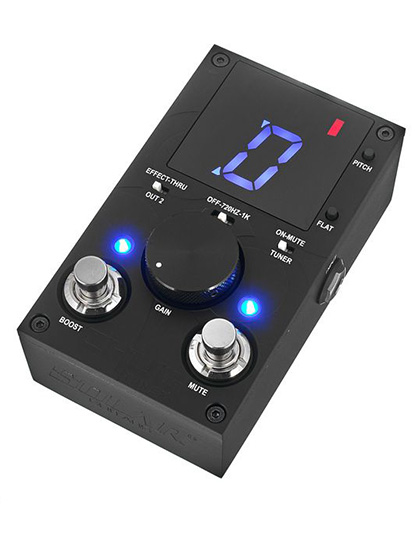
An innovative pedal that combines a precise tuner with a booster. Perfect for guitarists looking to optimize their pedalboard.
Weaknesses: relatively high price.
Highlights: dual functionality, modern design.
Tuner Harley Benton PowerPlant Tuner
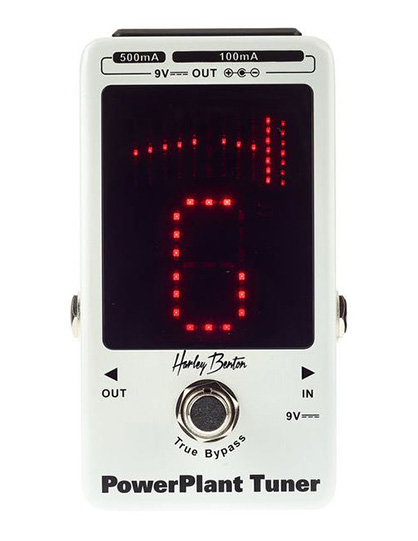
This model combines a chromatic tuner with a pedalboard power supply (8 x 9 V DC outputs (6 x 100 mA & 2 x 500 mA), offering an all-in-one solution at an affordable price.
Disadvantages: accuracy slightly inferior to top-of-the-range models.
Strengths: multifunctional, good value for money.
Summary & detailed comparison
| Model | Precision | Screen | Additional features | Price |
| Walrus Audio Canvas Tuner | ±0.1 cent | 2.8″ TFT LCD screen | True bypass or buffered bypass, strobe and needle modes, display customization | 158 € |
| Boss TU-3 | ±1 cent | High-brightness LEDs | Chromatic/guitar/bass modes, high-luminosity mode for outdoor use | 95 € |
| TC Electronic Polytune 3 | ±0.2 cent (in strobo mode) | LED with brightness sensor | Polyphonic tuning, strobe mode, built-in buffer | 81 € |
| Korg Pitchblack Advance | ±0.1 cent | Large LED display | Four display modes, true bypass | 89 (new version) |
| D’Addario Tuner+ | ±0.5 cent | LCD display | Integrated Buffer, vertical display of notes | 106 € |
| Peterson StroboStomp HD | ±0.1 cent | Customizable HD display | Strobe tuning, true bypass or buffered bypass, customizable presets | 135 € |
| Ernie Ball VP Tuner | ? | LCD touch screen | Integrated volume pedal, silent tuning | 266 € |
| Sonic Research ST-300 | ±0.02 cent | LED | Ultra-fast strobe tuning, true bypass | 140 $ |
| Solar Guitars Chug Tuner+ Booster | ±1 cent | Compact LED | Integrated booster, true bypass, designed for metal | 149 € |
| Harley Benton PowerPlant Tuner | ±1 cent | LED | Integrated pedal power supply, true bypass | 66 € |
*Prices may vary by retailer and region.
Tips and tricks for using your tuner
Proper use of your tuner can make all the difference. Here are a few tips to optimize your tuning sessions:
- Place the tuner in the first position on your pedalboard:
Connect your guitar directly to the tuner to guarantee a clear, accurate signal. - Use the neck pickup and set the tone to zero:
This prevents unwanted harmonics from interfering with tuner detection. - Tune in a quiet environment:
Ambient noise can interact with certain pedals or interfere with your listening. - Maintain your strings:
Old or worn strings can produce a less stable sound, complicating tuning.
What about online tuners?
In addition to physical pedal tuners, there are many digital solutions for tuning your instrument. Here’s an overview:
- Mobile applications: Applications such as Fender Tune, GuitarTuna or Pano Tuner allow fast, convenient tuning directly from your smartphone. Ideal for travel or impromptu sessions.
- Online tuners: Some websites offer interactive tuners that work with your device’s microphone. They’re often free and instantly accessible.
- Plug-ins for digital audio workstations (DAWs ): music software such as Logic Pro or Ableton Live integrate tuning tools for precise studio work.
These solutions don’t always replace a tuning pedal in terms of accuracy or ease of integration with a pedalboard, but they do offer a significant troubleshooting solution!
What’s your favorite tuner pedal?
Feel free to share your impressions in comments!


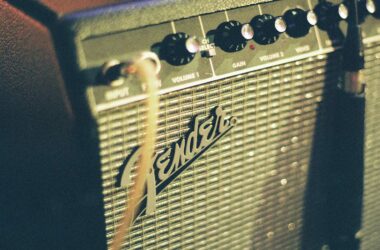
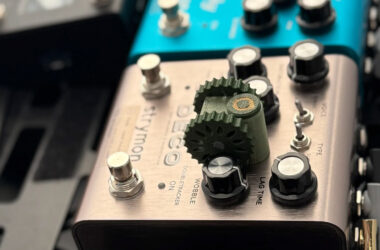

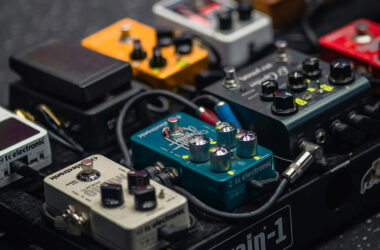


 Walrus Audio Canvas Tuner
Walrus Audio Canvas Tuner
 Boss TU-3
Boss TU-3

 tc electronic PolyTune 3 Tuner/Buffer
tc electronic PolyTune 3 Tuner/Buffer
 Korg Pitchblack X
Korg Pitchblack X
 Daddario PW-CT-23 Pedal Tuner
Daddario PW-CT-23 Pedal Tuner
 Peterson StroboStomp HD
Peterson StroboStomp HD
 Ernie Ball EB6203
Ernie Ball EB6203
 Solar Guitars Chug Tuner+ Booster
Solar Guitars Chug Tuner+ Booster
 Harley Benton PowerPlant Tuner
Harley Benton PowerPlant Tuner